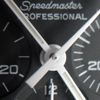ticktock
160

Setting the record straight - I hope
As the author of "A Journey in Time: The Remarkable Story of Seiko"
which was one of the references used by SJX, it seems appropriate to
post here Seiko's official description of the Spring Drive mechanism,
as quoted in the press release issued at the time of its launch. Given
the interest this is generating, I have also included some facts and
figures from the same press release. The words below are from Seiko.
Here goes:
1. The Mainspring. While SEIKO has made its own
mainsprings in-house since 1959, none of the existing springs were
considered strong enough to deliver the industry-leading performance
dreamed of by the engineering team. An entirely new spring was created
using a new high-elasticity material called Spron 510* to create more
power. The result is a mainspring that delivers more power, more
smoothly and for longer. Spring Drive has a power reserve of 72 hours.
2.
The ‘Magic Lever’. The new ‘Magic Lever’ system allows for more
efficient transmission of the rotor’s power to the mainspring. It is
fitted directly to the shaft of the rotor and thus creates more
efficient winding of the spring. This new system is 30% more efficient
than traditional winding systems.
3. Tri-synchro regulator. This
new device replaces the escapement and thus eliminates the weakest and
most vulnerable part of the traditional watch mechanism. It regulates
the three kinds of energy used in the Spring Drive mechanism, the
mechanical power of the mainspring, the electrical energy, created from
this mechanical power which activates a crystal oscillator, and the
electro-magnetic energy that turns the glide wheel precisely 8 times
per second.
Spring Drive is unique because, while it has nearly all
the characteristics of a classical mechanical watch, it does not
require an escapement. The escapement uses the back and forth motion
of a balance wheel to regulate the speed at which the spring drives the
hands and it is this high-friction motion that makes the traditional
mechanical watch vulnerable to inaccuracy and damage. The genius of
Spring Drive is that all the motion in the movement is in one
direction, so that the friction is all but eliminated. It is also this
one-way motion that allows the hands to move with the unique
glide-motion that reflects the real nature of time. Spring Drive is a
natural revolution in timekeeping.
The mainspring power supply, the
gear train, the power reserve system and the Magic Lever are classical,
mechanical watch components. Of the 276 components in each Spring Drive
watch, 80% are those incorporated in mechanical watches. Like the
highest grade mechanical watches, Spring Drive has 30 jewels to ensure
low friction and high accuracy, and each watch is assembled by hand by
SEIKO’s most skilled craftsmen and women.
The electronic components
of Spring Drive are state-of-the-art. While other companies have
attempted to develop a mechanical watch with an electronic time
regulation system, only SEIKO has succeeded in realizing this dream.
It required new advances in electro-magnetics to develop the braking
system within the regulator and new advances in power generation and IC
to convert part of the mainspring’s mechanical power to an electrical
signal; just 25 nanowatts are all that is required to power the circuit
and the crystal oscillator. This is 50% of the power needed in any
conventional watch circuit.
• 0.025 mm. The thickness of each layer of alloy in the coil block.
• 1 second a day accuracy, 10 times better than the chronometer mechanical standard.
• 3 types of energy are controlled by the Tri-synchro regulator: mechanical, electrical and electro-magnetic.
• 8 times per second. The precise speed at which the glide wheel turns within the electro-magnetic braking system.
• 13 generations of prototype were built in the development phases.
• 15 microns. The width of the wire in the Tri-synchro regulator’s coil.
• 18 layers of amorphous alloy in the coil block.
•
25 nanowatts. The minute amount of power needed to activate the
regulator, less than half that needed in all other watch circuits.
• 28 years of research and development invested in the project.
• 30 percent improvement in winding efficiency achieved through the improved Magic Lever system.
• 30 jewels in the movement. 32 in the small second hand version.
• 72 hours of power reserve.
• 124 years of Seiko's expertise in time keeping.
• 230 patents have been applied for in Japan, USA and the EU.
• 276 components in the movement. 280 in the small second hand version.
• 600 actual prototypes were built between 1997 and 2004.
• 25,000. The number of times the coil is wound, for maximum energy efficiency.
• 28,800. The number of times the glide wheel turns per hour.

A Short History of the Grand Seiko

Great reading for GS fans... and for those who are not familiar with ...
Fantastic read!! Thank you!!
Thanks for the informative post about the GS.

great read, but one particularly controversial passage

Some thoughts on the controversy...

Great read, JiaXian, ....

Like I wrote earlier Suibert...

Hi JiaXian, ....
The source I have read which somewhat addresses this







